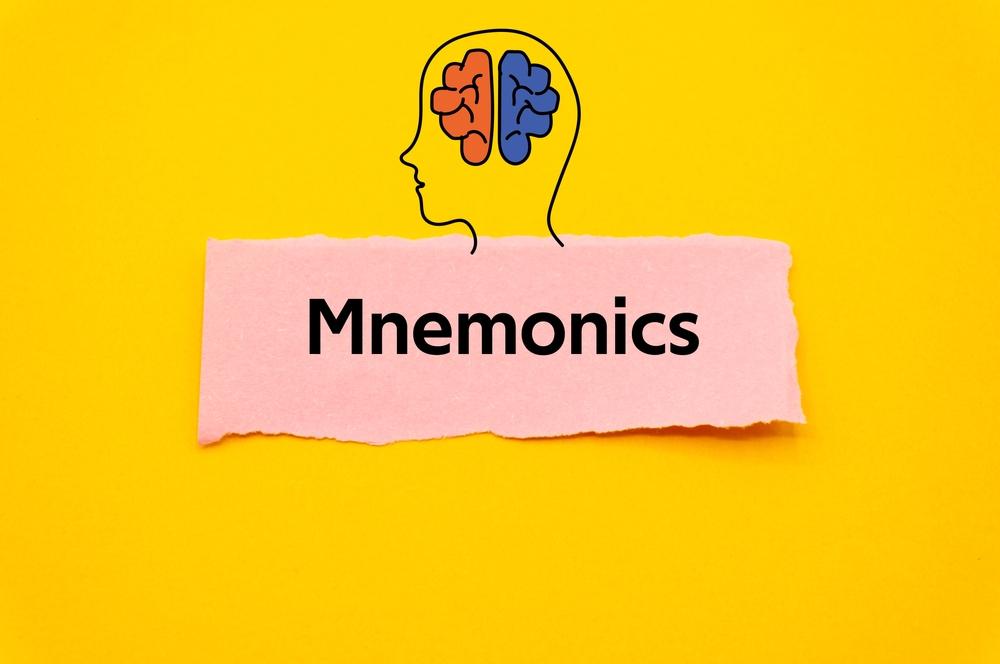When it comes to studying, efficiency is key. Whether you’re preparing for exams or trying to retain more information, using smart techniques can help you get the most out of your study sessions. By focusing on proven strategies, you can learn more in less time, reducing stress and boosting productivity. Here are some effective study methods that can transform how you absorb information.
Active Recall

Active recall is a highly effective study technique that involves testing yourself on the material you’ve just learned. Instead of passively rereading notes or textbooks, you actively stimulate your memory by answering questions or recalling facts without looking at your study material. This method strengthens neural connections and boosts retention, helping you remember more in less time. It’s been proven to enhance long-term memory because it forces your brain to retrieve information, making it easier to recall later on during tests or real-life applications.
Spaced Repetition

Spaced repetition leverages the spacing effect, a psychological phenomenon where learning is more effective when it’s spaced out over time. By reviewing material at increasing intervals, you strengthen your ability to retain information over the long term. This technique is especially effective for memorization tasks such as language learning, vocabulary, or historical dates. Spaced repetition apps, like Anki or Quizlet, automate this process, helping you to revisit important content just before you’re likely to forget it.
Pomodoro Technique

The Pomodoro Technique involves breaking your study time into focused intervals, typically 25 minutes of studying followed by a 5-minute break. This cycle repeats four times, after which you take a longer break. The structured format helps maintain focus and energy while preventing burnout. By concentrating fully for a set period, you get more done in less time. This method capitalizes on short bursts of concentration, which aligns with how the brain naturally functions, and promotes sustained productivity over time.
Feynman Technique

The Feynman Technique, named after physicist Richard Feynman, involves teaching a concept in simple terms as if explaining it to a child. By breaking down complex ideas into understandable parts, this method highlights areas where your understanding is lacking. When you struggle to explain a topic simply, it’s a sign you need to revisit the material. This process not only reinforces your grasp of the subject but also deepens comprehension and retention, making it easier to recall and apply in exams or discussions.
Mind Mapping

Mind mapping is a visual tool that helps organize information in a way that mirrors how your brain processes it. Starting with a central idea, you branch out into related concepts, creating a network of information. This technique works especially well for complex subjects with interconnected topics, like history, biology, or project management. By using color codes, symbols, and images, mind maps stimulate both hemispheres of the brain, enhancing memory and comprehension. It’s an excellent technique for visual learners who prefer seeing the bigger picture.
Interleaving

Interleaving involves studying multiple topics in rotation instead of focusing on one topic for a prolonged period. This method may seem less effective in the short term but leads to better long-term retention and understanding. By switching between different subjects, your brain stays alert, and you strengthen your ability to differentiate between concepts. This technique is particularly useful for subjects like math or languages, where you need to master various types of problems or rules.
SQ3R Method

The SQ3R (Survey, Question, Read, Recite, Review) method is a systematic approach to studying that enhances comprehension and retention. First, you survey the material by skimming it to get an overview. Then, you formulate questions about the content. As you read, you look for answers to these questions. After reading, reciting key points aloud reinforces what you’ve learned. Finally, reviewing the material helps solidify your understanding. This multi-step process ensures a deeper grasp of the content and aids long-term memory retention.
Chunking

Chunking is a technique that involves breaking down large amounts of information into smaller, more manageable units. This method works because the brain can only process a limited amount of information at a time, often referred to as working memory capacity. By grouping related concepts together, chunking makes it easier to memorize large volumes of information, such as phone numbers, equations, or vocabulary lists. It’s especially helpful in fields like mathematics, where breaking down formulas into components enhances understanding.
Self-Quizzing

Self-quizzing is another active learning technique that involves testing yourself on key material after each study session. By creating flashcards or writing practice questions, you force your brain to retrieve information, strengthening your memory. It also provides immediate feedback on which areas you need to focus on more, helping you prioritize study time. This method aligns with the testing effect, which shows that retrieving information improves long-term recall more effectively than rereading material.
Elaborative Interrogation

Elaborative interrogation involves asking yourself “why” questions about the material you’re studying. For example, if you’re learning a historical event, you might ask why it happened or why it was significant. This method deepens understanding by encouraging critical thinking and connecting new knowledge to what you already know. By probing deeper into the material, you enhance comprehension and long-term retention, making it easier to recall and apply information in different contexts.
Visualization

Visualization techniques involve creating mental images to represent information. This can be especially helpful in subjects like science, where processes or systems are complex. For example, you might visualize how photosynthesis works by picturing sunlight entering a leaf. Creating vivid mental images helps strengthen memory associations and allows you to understand and recall intricate details with greater ease. It’s especially effective for visual learners who find it easier to understand concepts when they can see them mentally.
Cornell Note-Taking

The Cornell Method is a note-taking system that divides the page into three sections: notes, cues, and summary. The main note section is for jotting down key ideas during a lecture or reading. The cue column is for keywords or questions, and the summary section helps you reflect and synthesize the information. This structured format helps organize your notes and encourages active engagement with the material, improving both comprehension and retention. It’s especially useful for students preparing for exams or writing essays.
Mnemonics

Mnemonics are memory aids that use associations, patterns, or acronyms to help you remember information. For example, using the acronym “HOMES” to remember the Great Lakes (Huron, Ontario, Michigan, Erie, Superior) is a popular mnemonic. By creating a mental shortcut, you simplify complex information, making it easier to recall. This method is particularly helpful for memorizing lists, formulas, or procedures. Mnemonics add an element of creativity to studying, making it easier to retain large volumes of information.
Study Groups

Study groups allow you to collaborate with peers, sharing different perspectives and filling gaps in your understanding. Discussing topics and explaining them to others reinforces your learning, while listening to others’ explanations helps clarify concepts you might struggle with. Additionally, study groups provide a sense of accountability, keeping you on track with your study schedule. It’s a great way to stay motivated and ensure you’re fully grasping material before exams.
Prioritization of Weak Areas

Focusing on your weak areas first is one of the most efficient study techniques because it addresses your gaps in knowledge. By dedicating more time to topics you find challenging, you ensure that you won’t be caught off guard during exams. This method also helps reduce procrastination, as you’re actively working to improve areas that need the most attention. It’s an effective way to make the most out of limited study time and ensures balanced mastery of all subjects.
Distributed Practice

Distributed practice spreads out study sessions over a longer period instead of cramming all your study time into one sitting. This method aligns with how the brain processes information, improving retention by allowing the brain to rest and absorb information in chunks. Studies show that spacing out learning sessions significantly boosts long-term retention, making this technique ideal for cumulative subjects like languages or mathematics that require regular review over time.
Dual Coding

Dual coding involves combining words and visuals to enhance learning. For example, when studying biology, you might create diagrams alongside text to reinforce your understanding of a concept. This technique leverages both the verbal and visual processing centers of the brain, making it easier to encode information in multiple formats. By seeing and explaining the material in different ways, you increase the likelihood of retaining it longer. It’s especially helpful for learners who benefit from diverse study approaches.
Retrieval Practice

Retrieval practice is the act of recalling information from memory, which reinforces learning and solidifies neural connections. This technique is more effective than passive review because it actively engages the brain. Flashcards, quizzes, or writing summaries without referring to your notes are examples of retrieval practice. It’s a powerful tool for improving memory retention and ensuring you can apply knowledge in high-pressure situations like exams.
Focused and Diffuse Thinking

Balancing focused and diffuse thinking is a valuable study strategy. Focused thinking involves deep concentration on a specific task, while diffuse thinking allows the mind to wander and make connections between different concepts. This alternation between the two types of thinking encourages creative problem-solving and deeper understanding. Scheduling time for both types of thinking during study sessions helps with mastering difficult subjects like math, where problem-solving and conceptual understanding are both needed.
Teach What You Learn

Teaching others is a powerful method for cementing your understanding of a topic. When you explain a concept to someone else, you break it down into simpler terms, which helps you grasp it better yourself. This technique is effective because it reveals gaps in your knowledge while reinforcing what you already know. It’s particularly useful when studying in groups, as each person can take turns teaching different concepts, benefiting everyone involved.
Contextual Learning

Contextual learning is the process of connecting new information to real-world situations or existing knowledge. By relating study material to personal experiences or familiar topics, you make the content more relevant and easier to understand. This approach is especially useful in subjects like history or social studies, where making connections between past events and modern-day issues deepens comprehension. By embedding learning in meaningful contexts, you improve retention and application of knowledge.
Positive Reinforcement

Incorporating positive reinforcement into your study routine can boost motivation and productivity. By rewarding yourself after completing a task, such as taking a break or treating yourself to something you enjoy, you create a positive association with studying. This technique encourages consistency and reduces procrastination, as it turns studying into a more enjoyable experience.
This article originally appeared on UnifyCosmos.
More from UnifyCosmos
20 Strategies for Maintaining Healthy Boundaries in Relationships

In today’s fast-paced world, where technology and social pressures can blur lines, setting clear boundaries is more important than ever. These are 20 practical strategies that can help you keep your relationships balanced and healthy. Read more!
20 Love and Relationship Myths Debunked

By identifying and challenging these myths, we can build healthier and more fulfilling connections. Let’s explore some common false beliefs about relationships and uncover the truth behind them. Read more!
17 Ways to Keep the Spark Alive in Long-Term Relationships

As the years go by, it’s easy to fall into routines and let the excitement fade. However, with a little attention and creativity, you can bring back that special connection. Here are some simple ways to reignite the passion and strengthen your bond. Read more!
Leave a Reply